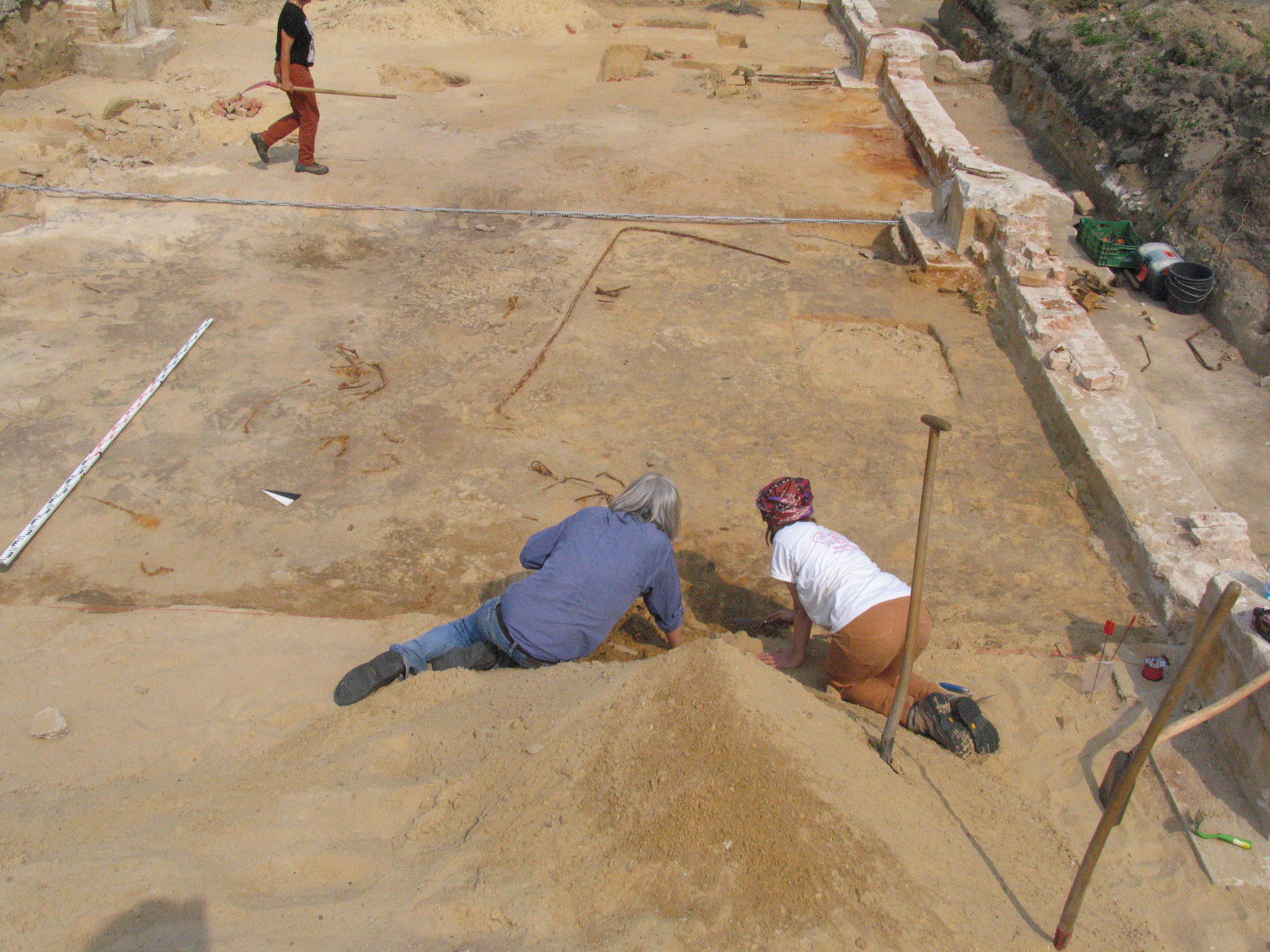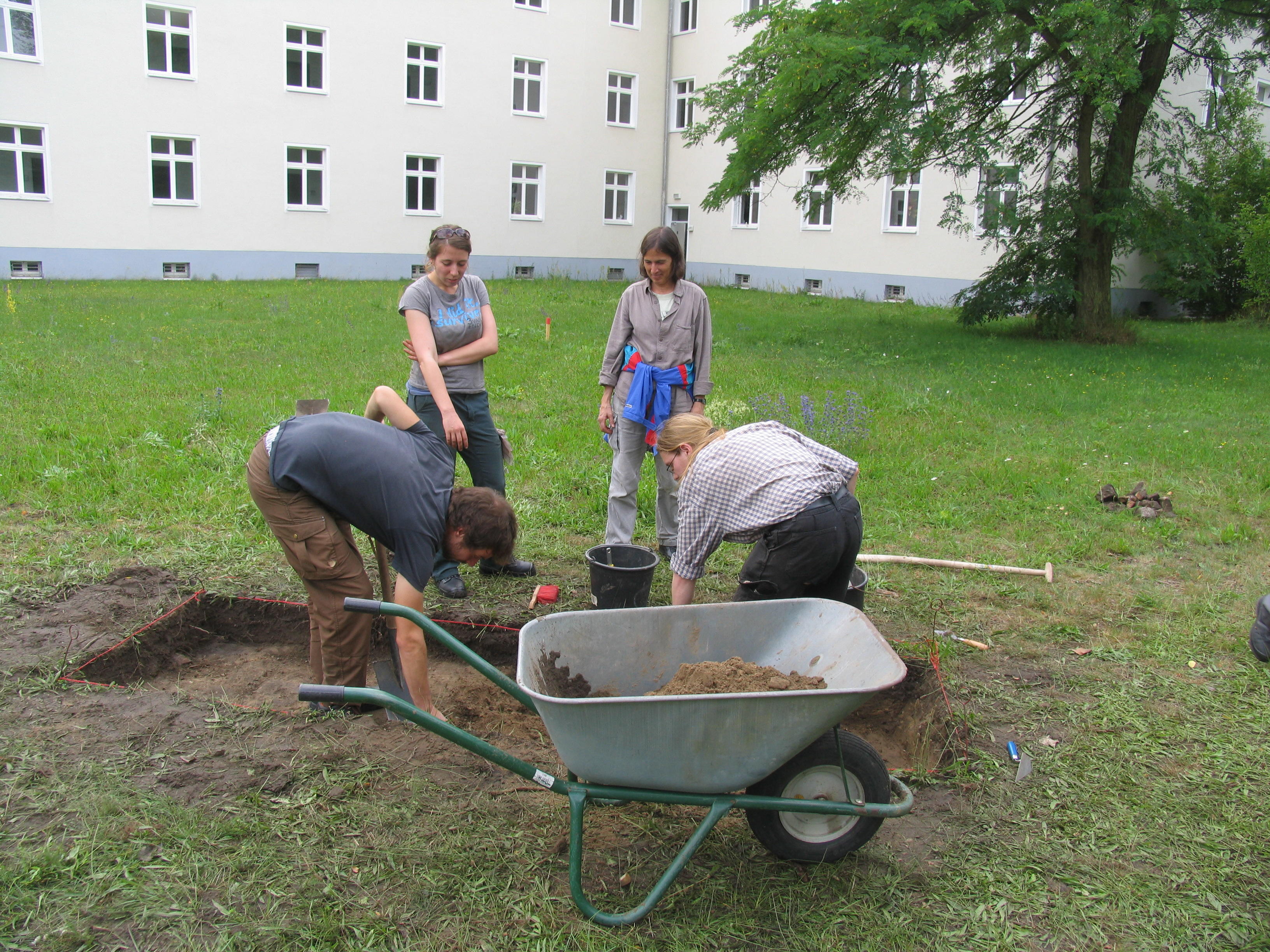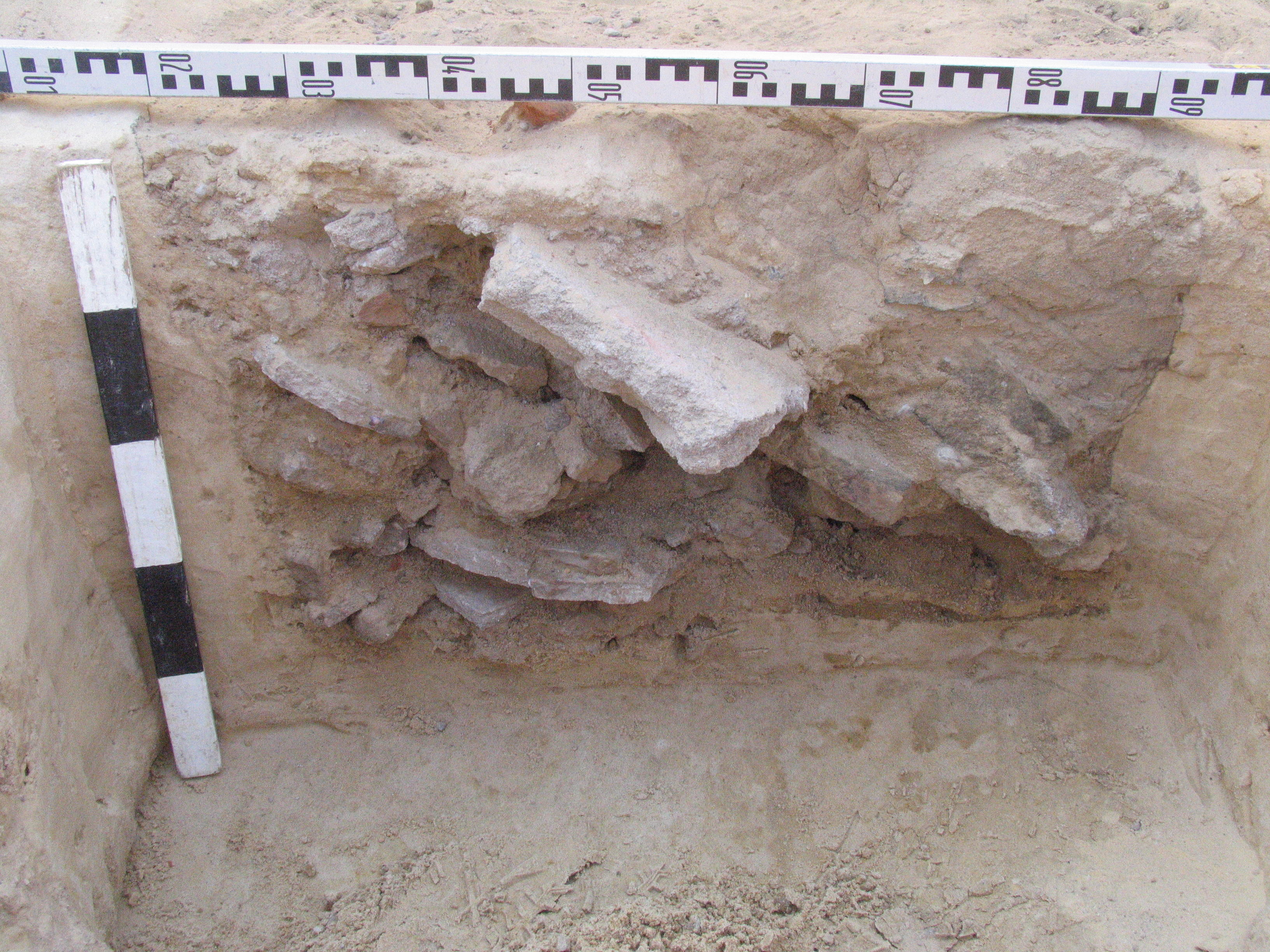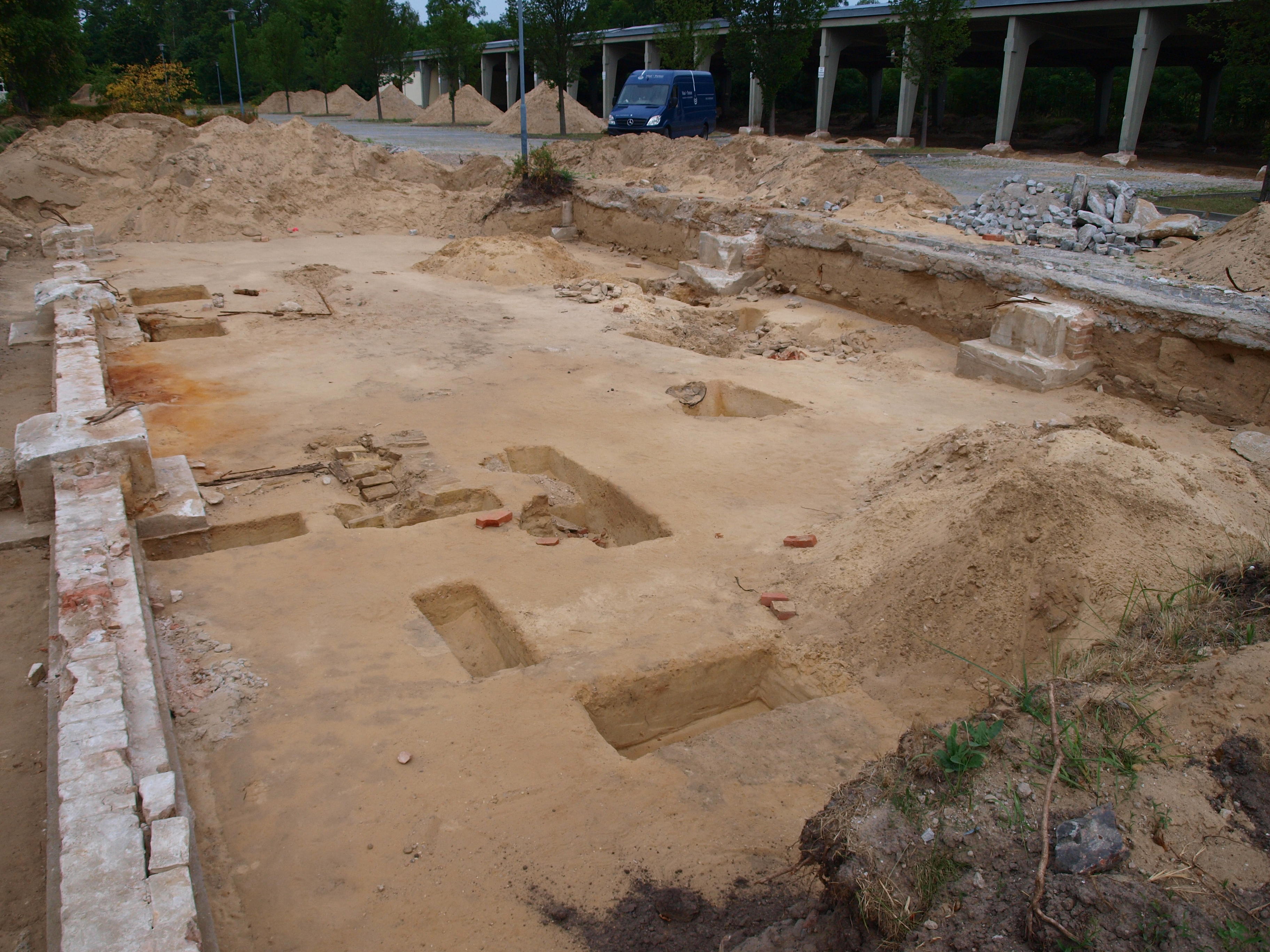Archaeologists Find Artefacts from First Mosque in Germany
Team of Archaeologists Discovered Parts of the Wooden Dome and Fragments of the Mosque Window
№ 255/2015 from Aug 31, 2015
During excavations near Wünsdorf, about 40 kilometers south of Berlin, archaeologists from Freie Universität Berlin, in cooperation with the Brandenburg Landesamt für Denkmalpflege (State Office for Heritage) and State Archaeological Museum as well as the ABD Dressler company, have found remains of the oldest mosque in Germany. (The mosque in Schwetzingen is older, but it was not built to be functional as a mosque.) The team led by professors Reinhard Bernbeck and Susan Pollock discovered wires and iron bolts used to brace up the wooden dome as well as green and blue glass shards from the mosque's windows. They were also able to determine the location of the mosque that was consecrated 100 years ago. The southern veranda of the mosque along with the minaret were also uncovered. On the site, which is currently a parking lot, there were also a prayer room and the northern courtyard of the mosque, but the archaeologists did not dig in that section. Overall, only a few remnants of the building were preserved because there were many changes to the site during the decades after the mosque was torn down. First the National Socialists and then the Soviet Army used it for military purposes. The so-called Crescent Moon Camp was set up during World War I specifically for prisoners of war who were Muslims. There they were supposed to be indoctrinated to fight against their colonial masters, France, England, and tsarist Russia. At the same time, they were abused as "exotic scientific objects" and studied in accordance with racist teachings common at the time in the fields of ethnology and anthropology.
"A detailed drawing of the construction site from 1916 made our excavation work, which lasted several weeks, much easier than it would have been without the drawing," said Reinhard Bernbeck. At about one meter depth, the archaeologists found individual artefacts around the former mosque. "We can clearly see that the mosque was systematically dismantled," said Bernbeck. "Usable parts of iron and wood as well as the so-called Rathenower bricks – the floor covering – were taken out and re-used." The abandoned unusable broken bricks and pieces of iron are, however, sufficient to provide information about the materials used in the construction. In addition, the excavation team found a great deal of evidence from the Soviet occupation, such as parts of military tanks, remains of meals, canning jars, and beer bottles.
The excavations were done now because this coming week the State of Brandenburg intends to install residential containers for refuges on the site of the former mosque and barracks.
Press Photos
The first four photos below may be downloaded by members of the media to use free of charge in the context of reporting on this press release, provided they give due credit to the state of Brandenburg and the photographer: "Brandenburgisches Landesamt für Denkmalpflege und Archäologisches Landemuseum/Prof. Dr. Susan Pollock, Freie Universität Berlin"
Pieces of metal and nails from the mosque.
View of the surface southwest of the mosque (gray) with bracing parts of metal from the dome of the former mosque.
Section of the excavation near a barracks of the "Crescent Moon Camp"; layers dating to the Soviet period of the site.
Section of a foundation pit of the mosque, which had been filled with concrete slab pieces.
The two photos below may be downloaded by members of the media to use free of charge in the context of reporting on this press release, provided they give due credit to the state of Brandenburg: "Brandenburgisches Landesamt für Denkmalpflege und Archäologisches Landemuseum"
Concrete base of a military tank depot from the Nazi period along with older pits.
Archaeologists at work uncovering the soil around the mosque. In the foreground, part of a military tank depot from the Nazi period is visible.
Further Information
Prof. Dr. Reinhard Bernbeck, Institute of Ancient Near Eastern Archaeology, Freie Universität Berlin, Tel.: +49 157 / 87295964, Email: reinhard.bernbeck@fu-berlin.de






